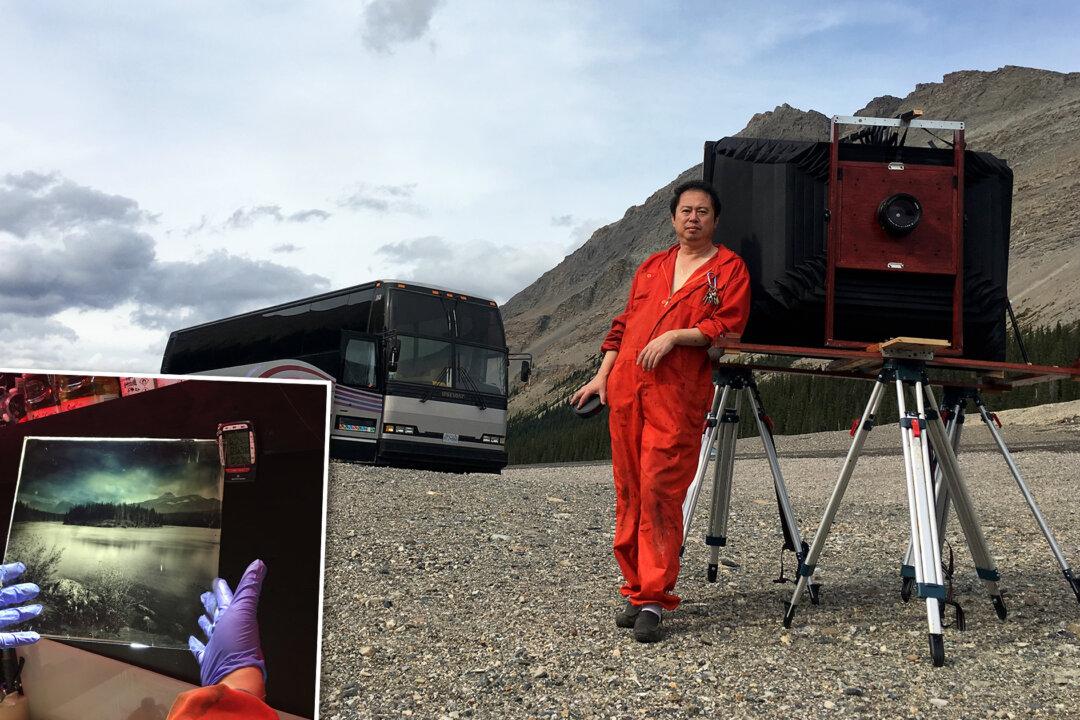When a man with a penchant for the old-fashioned art of wet plate photography decided to size up but stay mobile, he spent two years building a massive 32-by-48-inch camera frame and portable darkroom on a bus, to make his dream a reality.
Chinese-born Bill Hao, 49, immigrated to Canada in 2002 and lives in Vancouver, where he runs a travel company with his wife.





